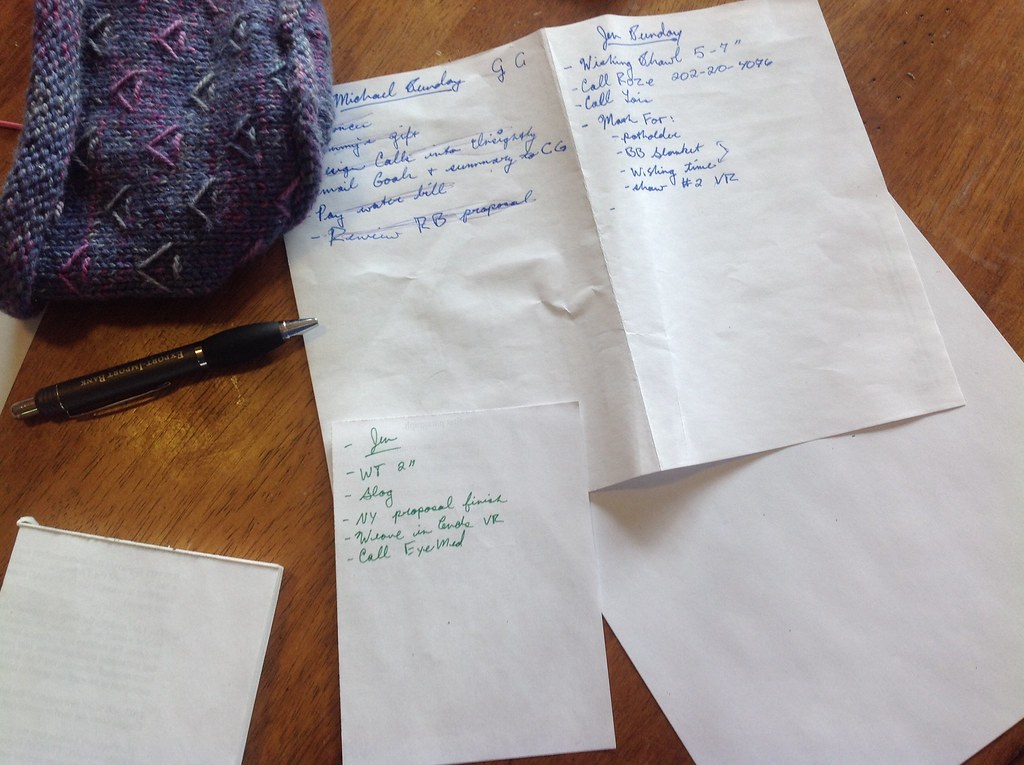From the Business Desk is back. From the Business Desk is a semi-regular series that looks at some of the important factors in running a Small Fiber Arts Business. This feature revolves around market evaluation, and some tips to find the right niche for your business.
As any small business owner knows, it’s a fierce world out there to break into any market. Be it establishing a LYS, becoming your own design company, breaking into the teaching circuit, all of these arenas seem to have well established entities that have solid client bases that seem to have everything put together. How will you ever be able to differentiate your new business and your ideas from the existing market, you may ask yourself. One of the handiest tricks of the business trade to help you accomplish this is the SWOT analysis. Standing for Strengths, Weaknesses, Opportunities, and Threats, this analysis can help you start to make sense of your business’s place in the market, and areas which you can develop to better differentiate and market your ideas.
 |
| SWOT Matrix overview. Image courtesy of wikipedia.org |
Fitting neatly into a 2 x 2 matrix (one of my favorite visualizations for many different business strategies), the SWOT analysis can help you identify some key attributes both about your business as well as the marketplace.
Strengths are the things that your business does quite well or has a key competitive factor; items could include physical location of a shop in a high-traffic downtown area, or having a well rounded resume of instruction at a variety of locations.
Weaknesses are known areas where you could use some improvement; an example of this could be that you don’t really possess a strong skill-set on computer tools like Excel or Microsoft Publisher as a designer.
Opportunities are areas that in your opinion the market or industry has not fully realized, such as there being a wealth of crocheters living in a particular town, but no dedicated crochet instructor.
Threats can be anything externally that stands the chance of impeding the growth and progress of your business. Threats can be micro, such as the fact that there is already a teacher who has been teaching a particular class that you want to start teaching at a regional fair, or macro, such as the overall state of the retail yarn market in a particular state.
Remember, these should be fairly high-level; while it’s good to have an in-depth analysis of your business and the market, for the first time that you do this exercise, try to distill it down to the top three or four attributes in each category.
Once you have developed your ideas and thoughts, it’s time to tweak the matrix to help understand how this can lead to a strong business plan development.
| SWOT action item Matrix |
By combining each of these categories in a grid, you can identify specific action items that emerge from the attribute clusters. The two most important areas to be aware of and consider are the Strength-Opportunities and the Weakness-Threat quadrants. These two reflect the immediate areas for business development and defense strategy respectively.
Breaking down your businesses’ market position utilizing the SWOT analysis, you can simply and easily lay the groundwork for a comprehensive business plan that can help you take advantage of market opportunities. One final note about the SWOT analysis; it is not meant to be a static market. Over time, both your business strengths and weaknesses as well as your perceived opportunities and threats in the market can significantly change. It’s a good idea to review and update this grid on a regular schedule (here at Tinking Turtle we review our SWOT items quarterly and develop a new SWOT matrix annually). By doing this, you can ensure that you are aware of where you need to focus your business development objectives for the near future.
~ Mr. Turtle








